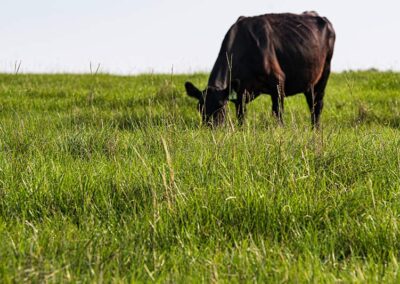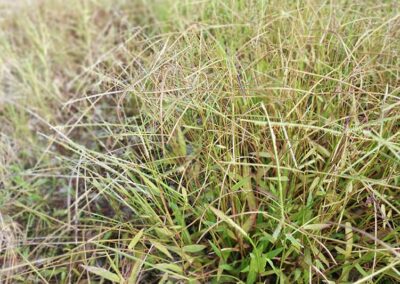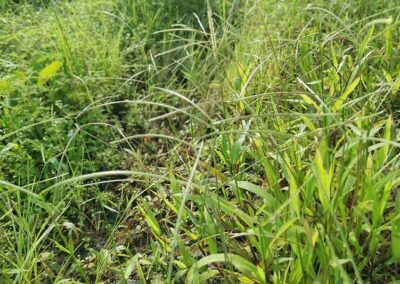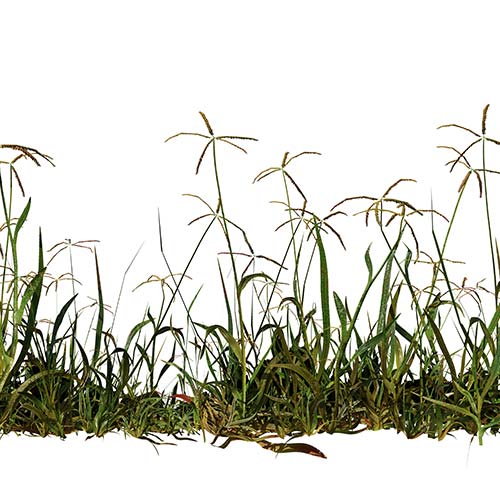
Bahia

Pollen Type: Grass
Cross-Reactivity: Corn, Melaleuca
HS Allergy Extract: Bahia Grass
Family: Poaceae
Genus/Species: Paspalum notatum
Common Names: Bahia, Commonbahia, Pensacola Bahia
Distribution: Primarily found in warmer coastal regions of the United States, prevalent in Florida and other Gulf states. Can also be found in California, Hawaii, Texas, and Arizona.
Locations: Throughout the lower 48 states.
Pollination Method: Wind-pollinated
Pollinating Period: May – October
Description: Bahia is a low-growing, creeping grass that reaches a height of 12″-25″. Its leaves are flat, rough, and typically hairless, with skinny blades that measure from 1/10″-1/4″ wide. They are flat, folded, roll inward, and taper to a fine point. The characteristic V-shaped spikes on the plant’s inflorescence (flower clusters) are often mistaken for spikelets but are actually tiny flowers. Bahia grass prefers sandy soil and is tolerant of shade. It is a hardy plant that can tolerate saline conditions and drought. It is primarily used as a forage crop but is also helpful in controlling soil erosion. Originally introduced in southern states as a lawn grass.




